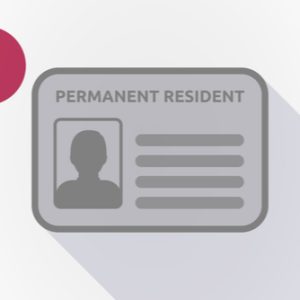What are the Different Types of “Status of Residence” (visa) for Foreigners Looking to Stay in Japan?
July 30, 2021
For a foreign national to stay in Japan, he/she must have a status of residence as defined by the Immigration Control and Refugee Recognition Act (Immigration Act). Each status of residence is assigned what is known as a “period of stay” which determines how long the visa holder is allowed to reside in Japan (with the exemption of permanent residents). One is allowed to stay in Japan within the scope of their status of residence and period of stay. Failure to do abide by these permissions by either not possessing a status of residence, or by overstaying, will result in penalty or deportation. Consequences will be determined by the severity of the unlawful act.
This page introduces the different types of status of residence so that foreign nationals may understand the proper requirements to stay in Japan legally.
We provide total support for employment and visa matters for foreign nationals. If you have any questions about employment or visas for foreigners, please feel free to contact us.
Types of Status of Residence
The Immigration Control and Refugee Recognition Act stipulates 29 major types of status of residence. As mentioned earlier, foreign nationals can stay in Japan within the scope of their status of residence. It is necessary to obtain a status of residence that corresponds to the type of activity, whether it is “to work in Japan” or “to study in Japan”.
Classifications of Status of Residence
The 29 statuses of residence can be classified into the following categories in terms of whether they allow employment (i.e., working to earn income or remuneration).
(1) Status of Residence that permits limited work: 19 Types
• Diplomatic visa for members of diplomatic missions or consular offices of foreign government
• Official visa for those who engage in official business of foreign governments or international organizations
• Working visa this visa is broadly categorized into separate categories:
Professor, Artist, Religious activities, Journalist, Business Manager, Legal/ Accounting services, Medical services, Researcher, Instructor, Engineer/ Specialist in humanities/ International Services, Intra Company Transferee, Nursing Care, Entertainer, Skilled labor, Specified skilled worker, Technical intern training
These are statuses of residence that allow you to work only within a specified range of activities. For example, a foreign national with a status of residence of “specialist in humanities/international service/engineering” who performs translation or interpretation work is not permitted to work as a chef in a restaurant for any compensation.
(2) Status of residence that permits unlimited work: 4 Types
• Permanent Resident
• Spouse or Child of Japanese National
• Spouse or Child of Permanent Resident
• Long-Term Resident
These are statuses of residence that do not limit the scope of employment. The most common type of resident status is “Permanent Resident,” but as a general rule, it requires 10 years of residence to achieve Permanent Residence which is a very difficult to obtain.
“Spouse or Child of Japanese National,” “Spouse or Child of Permanent Resident,” and “Long-Term Resident” are based on blood line or marriage, which is not accessible for everyone.
(3) Status of Residence with a non-working status: 5 Types
• Cultural Activities
• Short-Term stay
• Student
• Training
• Dependent for family stays
These are statuses of residence that do not allow employment. However, foreign nationals with “Student” or “Dependent” status can work up to 28 hours per week by obtaining permission to engage in activities other than those permitted under the status of residence previously granted.
Foreigners with “Temporary Visitor” status can stay in Japan for business purposes if they meet certain conditions, such as engaging in activities related to their main business outside Japan for a short period of time. This includes business meetings and participation in conferences and meetings.
(4) Exceptions: 1 type
• Designated Activities
Whether or not a foreigner with the status of residence of “Designated Activities” can work is determined by the content of the activities designated by the Ministry of Justice.
For example, if a foreign student who is engaged in an internship activity has a “Designated Activities” status of residence, he/she may work at the host institution where the internship will take place.
Procedures for obtaining status of residence
In order to obtain a status of residence, you need to apply according to the prescribed procedures. The procedures can be broadly classified as shown in the table below.
Terms
短期滞在= Short-term stay
短期滞在以外 = Other than short-term stay
査証免除国= Visa waiver country
査証免除国以外= Non-visa exempt countries
The “Temporary visitor” status refers to countries that do not require visas (entry with only a passport). At the time of this writing, 68 countries and regions fall under this category. However, visa exemption measures have been suspended for the time being, except for nine countries such as the United States and Canada, due to measures against the novel coronavirus infections.
The procedures for obtaining status of residence are as follows:
(A) Undergo landing examination at a Japanese airport and receive a seal of approval in your passport → Obtain “Temporary Visitor” status of residence.
(B) Apply for a temporary visitor visa at a Japanese embassy or consulate abroad → Present the passport with the visa and go through the landing examination at a Japanese airport and receive a seal of approval on the passport → Obtain “Temporary Visitor” status of residence.
(C) Apply for a Certificate of Eligibility through the immigration bureau by applying for a visa at a Japanese embassy or consulate abroad → Present your passport with the visa and go through the landing examination at a Japanese airport and receive a seal of approval in your passport → Obtain “Temporary Visitor” status.
There is a way to apply for a visa directly at the Japanese embassy abroad without receiving a certificate of eligibility, but this method is generally not recommended due to the hassle of submitting a large quantity of documents and the time to process takes several months. Method C is usually recommended due to the ease of obtaining a visa through the use of applying for a certificate of eligibility.
For example, if a foreign national is going to work for a Japanese company, the application for a Certificate of Eligibility falls under method C above. It is common for the company hiring the foreign national to assist in applying for a Certificate of Eligibility through the immigration bureau. After the certificate has been issued, the foreign national will now be granted a visa to enter Japan. It takes roughly 1 – 3 months to process a standard application for the certificate of eligibility depending on the number of applicants or natural causes.
Conclusion
In this article, we have introduced the different types of status of residences. It is necessary to address the purpose of your stay in Japan before taking any action. If you have any questions regarding status of residence, please feel free to contact us. Our experienced multilingual staff will be happy to assist you.







